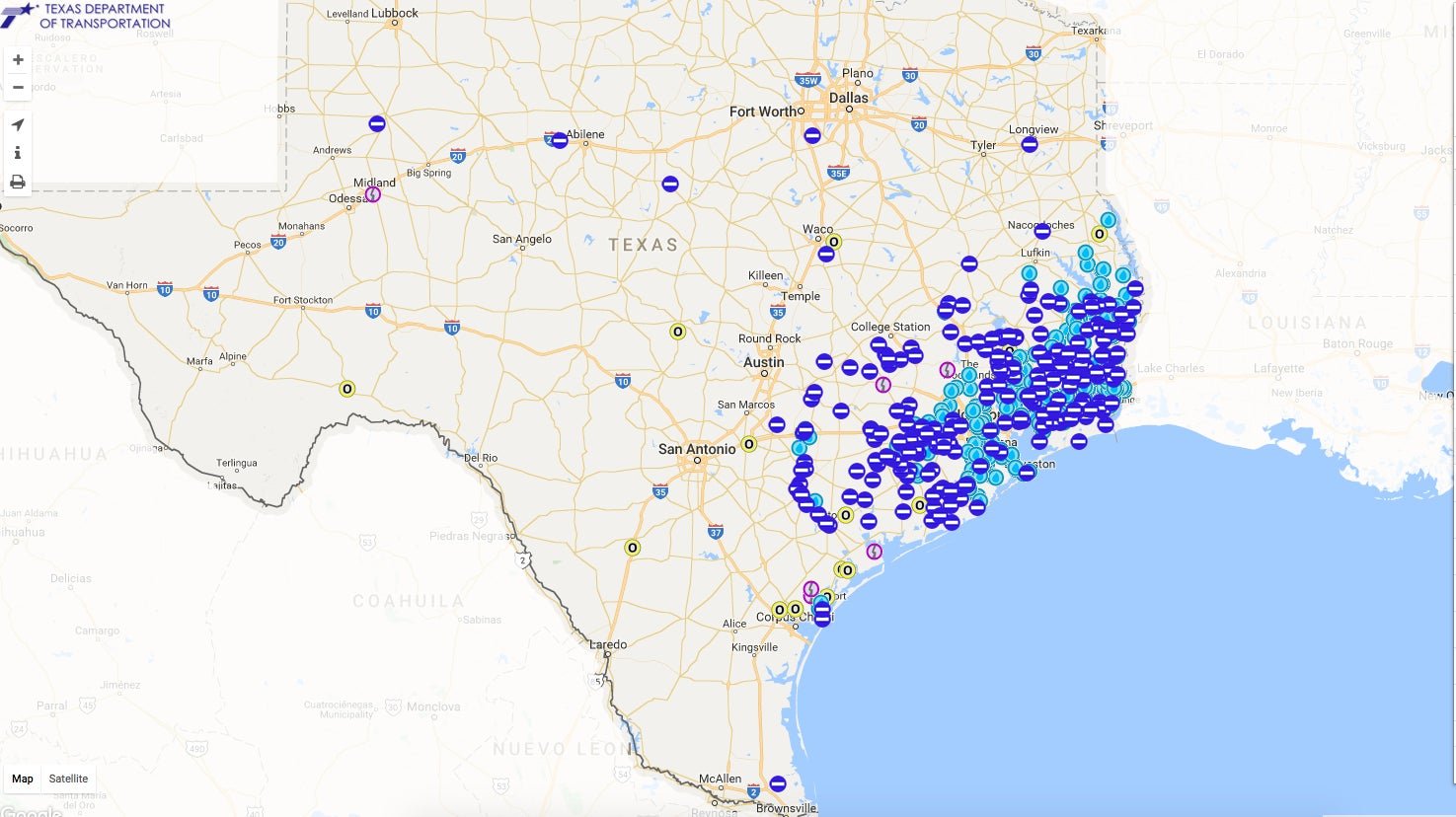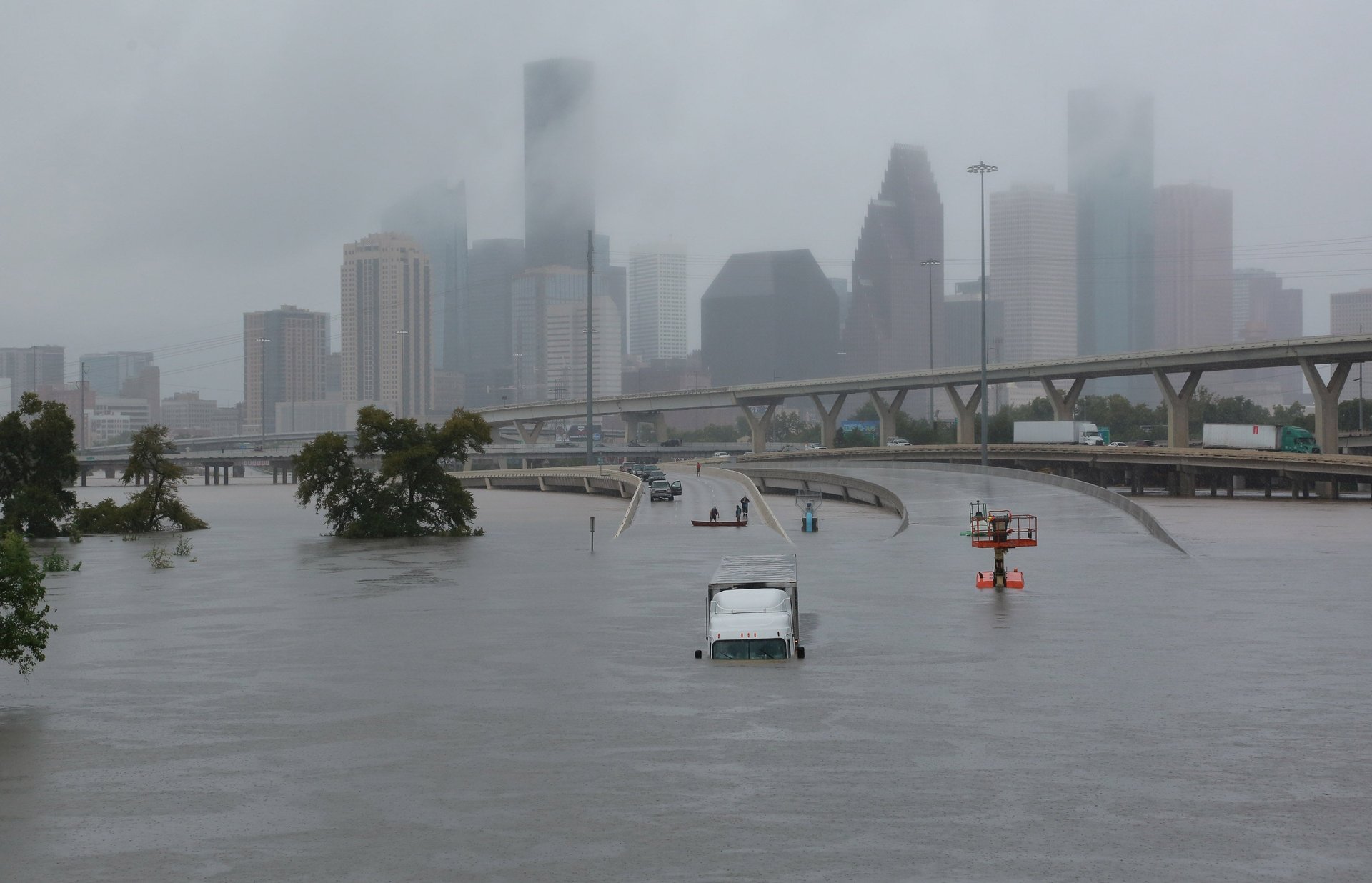One map shows just why the Texas flooding is so disastrous: It’s preventing people from escaping
In the days after tropical storm Harvey pounded Houston, officials in Dallas readied 5,000 beds at its convention center to shelter evacuees.


In the days after tropical storm Harvey pounded Houston, officials in Dallas readied 5,000 beds at its convention center to shelter evacuees.
But even as 9,000 evacuees huddled at Houston’s own convention center, exceeding its capacity by nearly double, only a couple hundred people had trickled into the Dallas shelter by Tuesday evening, according to local reports.
The two cities are less than 250 miles apart, a drive that normally takes three and half hours. Right now, though, many of the roads that lead out of Houston and other affected areas are flooded, closed or damaged due to Harvey’s record rainfall, according to the Texas Department of Transportation. Its map of road conditions paints a clear picture of why so many Houstonians continue to suffer in place.
While water has receded from some streets, it’s still filtering into others as the storm continues to move through the area. On Wednesday afternoon, more than 500 roads were flooded. The state’s warning to motorists is stark:
Travel is not advised in the affected areas due to rapidly changing water levels and unsafe driving conditions. Motorists who come upon a section of roadway that has water flowing across it should seek an alternate route. It is against Texas law to drive around barricades at flooded roads. And it’s never worth the risk. If you find yourself in need of shelter, please call 2 1 1. Remember: Turn around, don’t drown.
Among the blocked roads is Interstate 45, which links Dallas and Houston. Here’s a picture of how it looked on Sunday:

Houstonians who have been chased out of their homes have to look for a safe haven locally. Emergency officials in Harris County, where Houston sits, said more than 13,000 were preparing to spend the night at shelters Tuesday. (Region wide, the displaced topped 30,000, according to the Red Cross, which has set up or is supporting 230 shelters across Texas.)
Residents in the affected areas remain at risk, as evacuees at one shelter in Port Arthur found out. The city, east of Houston, was pummeled by rain overnight, causing the civic center where they had been staying to flood.
Now those weary hurricane survivors have to find yet another dry spot.